No sé quién decía que la vida es como un museo, cuando has acabado de recorrerla es cuando entiendes el significado de todas las obras. Me suele pasar lo mismo en los viajes. Los preparo, leo a conciencia todo tipo de información de los destinos, pero cuando los vivo es cuando realmente entiendo ese lugar, toda su historia, cultura y alma. Al llegar me gusta editar las fotos, volver a releer la información y aprender aún más de todo lo que he vivido ¿Os pasa? El caso es que hemos realizado un hermoso circuito por Holanda en familia durante 5 días. Hace muchos años que quería visitar este país y lo mejor ha sido hacerlo con los peques. Me llamaba de él sus grandes praderas verdes, sus vacas, tulipanes, los molinos o los zuecos de madera ¿Pero sabía su significado? Os aseguro que no. Después de recorrer esta tierra de agua ahora entiendo a este país y cómo ha luchado durante años para ser lo que hoy es.
Os sitúo un poco antes de iniciar nuestro viaje. Holanda es una región histórica y cultural situada en la costa occidental de los Países Bajos, en la costa del mar del Norte, en la desembocadura de los ríos Rin y Mosa. Para entendernos, esta región es como un delta, es un área inestable e inundable a lo largo de su historia, imaginad gran parte del territorio cubierto por marismas y zonas pantanosas (de ahí el uso de los zuecos antaño). Los principales ríos, el Rin y el Mosa, inundaban años atrás la zona regularmente e incluso cambiaron de rumbo en varias ocasiones y de forma espectacular. Al sur de Holanda, en Zelanda, y al norte, en Frisia, ocurrieron inundaciones catastróficas que destruyeron literalmente regiones enteras. Los holandeses dijeron ‘esto no puede pasarnos nunca más’ y aquí empezó, siglos atrás, su lucha contra el agua.
Lo que más me ha sorprendido de este viaje ha sido conocer el dique Afsluitdijk de 32 km de largo (luego os hablo de él) que construyeron a mano los holandeses en 1932 para cerrar el paso del Mar del Norte (el Zuiderzee) a sus tierras. Una obra de ingeniería espectacular que dio origen al lago artificial más importante de los Países Bajos: El IJsselmeer. Nosotros hemos visitado provincias y pueblos en sus riberas: Flevoland, Frisia… Este lago artificial funciona como una gran reserva de agua dulce para la agricultura y el consumo humano.
En todos los puntos costeros críticos los holandeses tienen diques de refuerzo. Entender su lucha histórica por dominar el agua es entender su desarrollo como potencia marítima y económica, así como el propio carácter de los holandeses. Con las tierras que ganaron al mar convirtieron los lagos, las marismas y las zonas pantanosas en pólders. Esta palabra hay que aprenderla si viajáis a holanda. Un pólder es una superficie terrestre ganada al Mar del Norte. Lo que hacen, explicado de manera muy sencilla, es aislar por medio de diques un espacio cubierto por el mar y lo desecan mediante el bombeo del agua (de ahí sus famosos molinos de agua) para conseguir un terreno óptimo para fines agrícolas, industriales o portuarios. En definitiva, esta histórica batalla del pueblo holandés contra la furia del agua ha llevado a que actualmente una cuarta parte de la superficie del país se asiente sobre terrenos ganados al Mar del Norte.
La ruta del agua
Hasta la fecha yo solo conocía Amsterdam. Había estado en esta bella ciudad por trabajo y por ocio, hasta en cuatro ocasiones. De hecho cuando la mayoría piensa en Holanda visita la capital oficial de los Países Bajos pero se deja todo un mundo por descubrir. Así que la ruta que os vamos a proponer para realizar en familia pasará por ella, porque allí está el aeropuerto internacional de Schiphol, pero dependerá de vosotros reservar un par o tres de días para descubrirla.
Nuestra ruta del agua empieza en los lagos Beemster y Schermer, Patrimonio de la Humanidad de la Unesco y la primera zona de tierra de Holanda ganada al agua. Hasta ellos llegamos en un coche que alquilamos en el aeropuerto. De camino paramos a comer en el restaurante Het Wapen van Munster en el pueblo De Rijp. Estuvimos muy a gusto allí en este lugar con más de 50 años de historia y comimos de maravilla, así que tomad nota: Het Wapen van Munster, GroteDam3, 1483AC, DeRijp. Tel: +31 0299 671496
Los lagos de Beemster y Schermer forman una zona de pólders única y son una obra maestra de drenaje del siglo XVII. En el periodo anterior a la construcción de los pólders, las aguas arrasaban aquí las tierras, destruían los diques y se llevaban consigo multitud de vidas humanas. Entre 1607 y 1612, los holandeses decidieron drenar una zona de mar interior con 3 molinos y crear una nueva región. El lago interior de Beemster se convirtió entones en un hermoso paisaje a 3,5 metros bajo el nivel del mar, dividido en un patrón geométrico de rectángulos y cuadrados. Recorrer sus estrechas carreteras es descubrir antiguas mansiones señoriales y hermosas granjas acampanadas, así como campos de tulipanes. También podéis visitar el Museo del Molino Schermerhorn y descubrir cómo funciona un molino, cómo ayuda a desecar la tierra. Podéis hacer la ruta en bicicleta o en coche como hicimos nosotros. También hay la opción de navegar en barco por este espacio natural protegido. Os aconsejo que vayáis al Tourist Information Office in Middenbeemster, Middenweg 185, como punto de partida para recabar la máxima información.
Parece increíble que con unos molinos hayan creado este área natural maravillosa repleta de aves y con una vegetación única. Como os contaba en 1999 el Beemster fue incluido en la lista de lugares Patrimonio de la Humanidad de la UNESCO, como una de las obras maestras creadas por el ser humano. En Beemster visitamos su fuerte que ha sido reconvertido en un lujoso resort, un Spa & Wellness espectacular.
Cerca de Beemster están las tierras del Schermer. Este terreno también se desecó con la ayuda de molinos. Para entender cómo se hacía fuimos al molino-museo de Schermerhorn, lo veis en nuestras fotos. Este es uno de los once molinos que se han conservado hasta la actualidad en la zona. Allí vimos cómo funciona exactamente un molino, cómo giran las aspas, y cómo se desecaban los pólders. Además, se ha recreado cómo se vivía y trabajaba dentro del molino a principios del siglo XX. Este molino, cubierto de paja, está amueblado al estilo de la época. Lo más divertido con los peques fue subir con cuidado a la parte superior del molino para ver los engranajes giratorios desde cerca.
Enkhuizen y el Zuiderzeemuseum Museum
Nuestra siguiente parada fue Enkhuizen, un municipio de la provincia de Holanda Septentrional, que fue pueblo de pescadores, con un importante puerto. Enkhuizen es uno de los pueblecitos más auténticos que visitar a orillas del IJsselmeer. Fuimos a cenar esa misma noche al restaurante Visafslag (Havenweg 3b, 1601 GA, Enkhuizen. Tel: +31 0228 526 428) y como teníamos que descansar y seguir la ruta al día siguiente, nos alojamos en un Bed & Breakfast de Opperdoes (a 23 minutos en coche de Enkhuizen). Ron y Jacqueline es el matrimonio propietario de este Bed&Breakfast que, os enseñé en mis historias de Instagram, y os recomiendo 100%. Los dos solos han reformado y decorado diferentes espacios (que antes eran almacenes) para hacer un lugar lleno de encanto. Además, son súper amables. Se desvivieron por nosotros y el desayuno fue de los mejores que tomamos en nuestro viaje a Holanda. Las habitaciones son amplias y con todas las comodidades (baño y entrada privada). También hay un jardín de estilo rústico con amplio dosel (lo veis en mis fotos). Tiene aparcamiento privado. Los peques se pasaron más de una hora saltando en el trampolín que había en el jardín.
Dormimos de lujo y al despertarnos fuimos a Enkhuizen de nuevo para visitar el Zuiderzeemuseum. Ese día nos llovió de lo lindo pero íbamos preparados. Es otro de los consejos que os quiero dar. A Holanda tenéis que ir en modo cebolla. Es decir, llevar capas, desde la básica camiseta de manga corta al chubasquero o chaleco acolchado de abrigo. Pensad que hemos ido en primavera pero es un clima húmedo y fresco. El Zuiderzeemuseum es un museo al aire libre que refleja la vida de los pueblos de la rivera del Zuiderzee (Mar del Sur) en la Edad Media. Es decir, los pueblos que antes de la construcción del gran dique (el Afsluitdijk) vivían de la pesca. Es curiosamente el único museo de Europa rodeado enteramente por agua, de hecho a él llegamos en un pequeño transbordador.
También como curiosidad debéis saber que alberga la colección de objetos antiguos más grande de Holanda. Recrea la vida decimonónica del Mar del Sur, el Zuiderzee, y para hacerlo trabajan en él voluntarios que van vestidos como en el siglo XXI. Los veréis en sus 130 construcciones realizadas a partir de edificaciones auténticas de la época: una herrería, casas, una escuela, una oficina de correos… Tienen hasta una iglesia que fue trasladada piedra a piedra al museo, un cementerio, un astillero y una tienda de ultramarinos donde degustamos un delicioso salmón ahumado. En nuestra visita nos acompañó la televisión holandesa que nos entrevistó a todos los miembros de la familia y emitieron ese día este reportaje tan divertido. Sin duda va a ser un recuerdo inolvidable.
En este museo estuvimos toda la mañana ya que vale la pena (os recomiendo al menos dedicarle unas tres horas). Los peques se vistieron con los trajes típicos de los habitantes de la época, de hecho hay muchas actividades para niños. Me sorprendió al entrar el Expedition Map que les dieron. En él explican a los niños, a modo de juego, qué hacer si el dique se rompe y entra el agua en las tierras, este es un ejemplo más de la relación de respeto y hasta pavor que mantienen los holandeses con las aguas desde hace siglos, pero también de su ingenio y perseverancia.
Flevoland
Flevoland fue nuestro siguiente destino en coche tras el Zuiderzeemuseum. Flevoland es la provincia más reciente de Holanda, se creó en el siglo XX como resultado del proyecto de recuperación de tierras más grande de la historia. Es decir, donde antes solo había agua, encontramos ahora una región única que fue ganada a las aguas de forma muy inventiva. Es el proyecto de drenaje más grande de toda la historia. A lo largo de los siglos, los holandeses crearon diversos planes para abordar el peligroso Zuiderzee (Mar del Sur). Pero fue el ingeniero Cornelis Lely quien en 1891 desarrolló la técnica para cerrar este gran mar interior de agua salada por medio de diques y convertirlo en el lago de agua dulce IJsselmeer. La construcción que fue, y sigue siendo, algo que no se había hecho antes en todo el mundo no fue sencilla ¡Imaginad crear un dique en mitad del mar! Yo aún estoy impresionada después de visitar esta región y el mismo dique de cierre (Afsluitdijk). Os hablaba antes de los pueblos que vivían de la pesca. Esta dejó de ser uno de los motores económicos del país cuando se cerró el paso del mar de agua salada a las costas. No obstante, los holandeses supieron cómo aprovechar el agua dulce en su beneficio (campos, canales, puertos…) y crear una industria muy rica.
Volviendo a Flevoland os contaré que en esta nueva tierra hay abundante naturaleza virgen (detrás de los diques podemos ver paisajes de praderas junto al agua) y ciudades con abundantes obras de arte y arquitectura donde vive gente en el fondo de lo que fuera el Zuiderzee (Mar del Sur). Tiene una superficie de 2.400 km2 de tierra y agua, y está situada a seis metros por debajo del nivel del mar. Esta es otra de las sorpresas para los viajeros. Imaginad caminar por un terreno que ha sido desecado área por área y rodeado por un dique de 251 kilómetros de longitud que protege esta tierras de las aguas que la bordean. ¿Sabéis que durante la construcción de Flevoland se hallaron más de 450 navíos hundidos en el Zuiderzee (Mar del Sur)? Seis metros por debajo del nivel del mar es una pasada ¿no os parece?

Antes de adentrarnos en Flevoland visitamos la estatua de casi 26 metros de altura del artista británico Antony Gormley que se ha convertido en un símbolo. Está creada a partir de 1.800 varillas de metal y es un hombre agazapado que mira hacia el lago Markermeer, contemplando el amplio paisaje. Nos encantó. Si queréis llegar a ella aquí os dejo la ruta: Strekdam Houtribsluizn, Oostvaardersdijk 101, 8242 PA, Lelystad. Si queréis ver más arte en Flevoland aquí tenéis esta web con todas las obras que podéis admirar.
Otra de las excursiones que hicimos y que os recomendamos fue en la escuela de vela de Randmeren en la población de Biddinghuizen. Allí alquilamos una embarcación. Comimos a bordo de la misma así que fue una travesía muy agradable, navegamos por el lago Veluwe. Pero lo mejor fue ver el “Sluizen” (cerraduras que muestran la diferencia del nivel de agua entre Flevoland y la tierra antigua). Nuestra barca bajó hasta 5 metros por debajo del nivel del mar antes de cruzar una esclusa y adentrarse en uno de los lagos. Fue realmente curioso. Esta zona de los Randmeren (lagos periféricos) es ideal para practicar todo tipo de deportes acuáticos gracias a su variedad de aguas. De hecho, en Flevoland podéis alquilar un velero, una lancha motora o un barco con cabina y navegar por el lago IJssel, el Makermeer y el extenso Randmeren, donde fuimos nosotros. Estos lagos son conocidos por su amplitud, tranquilidad y hermosas vistas.
Nuestro alojamiento de ese día estaba precisamente en esta zona, era un lugar para habernos quedado una semana y sino preguntadles a nuestros hijos. Se trata del Landal Waterpark (Leuvenumse Beek 1, 8256 TB, Biddinghuizen Telephone: +31 (0)78 6313390) Es un parque sostenible rodeado de agua en el que disfrutar de un sinfín de actividades junto al lago Veluwemeer. Tiene 140 villas (como las que veis en las fotos) y 120 apartamentos increíbles. Nosotros estuvimos en uno de ellos y teníamos hasta sauna en una de las habitaciones. El parque infantil con un trampolín gigante y la piscina interior llena de toboganes hizo la delicia de los peques. Frente al complejo tenéis una marina, así como la escuela de vela de Randmeren, para alquilar todo tipo de embarcaciones.
Después de muchos intentos de sacar a los niños de la piscina nos fuimos a cenar al restaurante Beach Club NU, un lugar maravilloso con vistas a la playa. Os dejo aquí la dirección porque cenamos de maravilla y es totalmente aconsejable que vayáis (Bremerbergdijk 10, 8256 RD, Biddinghuizen).
Tulip Festival
Seguro que si habéis leído hasta aquí os preguntaréis donde están las fotos con tulipanes. La ruta del tulipán más larga de Holanda está en el pólder de Noordoost, en Flevoland y tiene más de 100 kilómetros por unas 1.000 hectáreas de campos llenos de color, es una de las rutas más bonitas del mundo. Este año estaba en su máximo esplendor entre el 20 de abril y el 5 de mayo. Cuando nosotros pasamos por ella la mayoría de los tulipanes habían sido ya talados, aunque aún encontramos algunos campos privados en los que hacer bonitas fotos como las que veis. Eso sí echamos de menos las grandes extensiones de tulipanes que se suelen ver en las fotos. En las granjas privadas por pocos euros os dejarán recoger tulipanes. Es una actividad muy divertida para los niños. Eso sí, no os adentréis en un campo sin permiso. Os dejo aquí unas direcciones concretas para que vayáis directos (nosotros nos perdimos) Hanneke’s Pluktuin (Ellerweg 18, Biddinghuizen), el Zomerbloemen Pluktuin (Amsteldijk Zuid 183b, Nes a/d Amstel) o el Tulpenpluktuin del Boerenshop (Steenwijkerweg 26, Marknesse).
Waterloopbos
Después de todo lo que os he contado sobre cómo en Holanda estudian y viven con el agua entenderéis por qué a los holandeses se les conoce internacionalmente como el laboratorio del mundo en cuanto a la gestión del agua se refiere. El bosque Waterloopbos es un claro exponente de ello. Aquí hay modelos a escala de unas 30 grandes obras hidráulicas de todo el mundo. Es decir, en el Waterloopbos se diseñaron los puertos de Rotterdam, Lagos, Estambul y Bangkok, entre otros. Durante años este laboratorio natural simuló la realidad con agua, presas y máquinas de olas para evitar que Holanda pudiera inundarse ¿Qué os parece?
Pensad en la época en la que no existía la simulación por ordenador. Después de la Segunda Guerra Mundial, en la era preinformática, se creó este campo de pruebas para reunir todo el conocimiento posible. Se realizaron estudios sobre el movimiento de las olas, se reprodujeron esclusas, puertos y partes de ríos. Con el transcurso del tiempo, el bosque Waterloopbos ha perdido su función original. Los restos de los modelos de obras hidráulicas todavía se encuentran en él, pero la naturaleza ha hecho su trabajo. Musgos, plantas y árboles se extienden sobre estos lugares antiguamente tan valiosos. Por suerte, el bosque se ha mantenido y la organización medioambiental Natuurmonumenten ha asumido su gestión. De hecho el bosque fue nombrado monumento nacional de Holanda en 2016.
En mis fotos veis el famoso canal “Deltagoot”. Los artistas Ronald Rietveld y Erick de Lyon serraron enormes paneles de hormigón de diferentes tamaños de las paredes del Deltagoot con sus 250 metros de largo, que luego giraron 90 grados. Una experiencia mágica en un ambiente laberíntico que se utiliza mucho para fotografía de bodas, según nos contaban en Het ProefLab, la cafetería que encontraréis en el pabellón de la entrada y en la que sirven un delicioso pastel de las manzanas cultivadas en la zona.
A 5 minutos en coche del Waterloopbos, entre la playa y las dunas, está Kraggenburg y el restaurante Netl (Leemringweg 198317 RD, Kraggenburg), un lugar ideal como podéis ver en las fotos, con hamacas y zona de juegos infantil. El día que llegamos estaban celebrando una romántica boda. También tiene una zona de acampada con área para tiendas y autocaravanas.
Giethoorn
Nuestra siguiente parada tras el almuerzo fue Giethoorn. Os aseguro que es uno de los lugares que más nos ha gustado. Le llaman la Venecia del norte por sus bonitos canales. Pero os aseguro que estos no huelen como los de Venecia, están limpios y rodeados de pequeños lagos, cañaverales y bosques. Giethoorn está situado al Noroeste de Overijssel y es una de esas localizaciones típicas en la que los holandeses muestran que vivir junto a las aguas puede ser maravillosamente romántico y bonito. Alrededor del canal son características las granjas y casas con tejados de paja, pero solo pueden accederse a ellas desde las barcas o cruzando alguno de sus más de 170 característicos puentes de madera.
Nos alojamos en este Holiday Cottage cuyas casitas frente al lago tenían una barca eléctrica en la misma puerta. No sabéis que ilusión poder coger esta barca a cualquier hora y hacer un recorrido por las aguas de Giethoorn llenitas de patos. A mi no es que me den miedo los patos pero se nos ocurrió darles pan y a los 3 minutos teníamos a 20 patos rodeándonos, os aviso para que no os ocurra. En Giethoorn acosejan disfrutar de su gastronomía. Nosotros lo hicimos y cenamos en De Sloothaak (Binnenpad 141, Giethoorn). Os lo recomendamos.
Nuestra aventura nos llevó al día siguiente a De Kluft en Ossenzijl. Este es un centro de acampada en el que se pueden hacer travesías en canoa, en kayak o en barca. Como el día estaba frío nos decidimos por la barca. No sabéis que aventura más divertida y qué paisaje. Hacía un sol maravilloso y de repente se nos puso a granizar. Las ruta las haréis por el Parque Nacional Weerribben-Wieden. Allí mismo comimos en su cafetería antes de partir hacia Friesland.
Friesland, la Woudagemaal y Leeuwarden
Friesland o provincia de Frisia fue capital cultural en 2018 y la guía Lonely Planet la situó en el tercer lugar en su lista de tesoros ocultos de Europa. También el New York Times situó las islas Frisias en el puesto 30 de los mejores lugares para ir este año 2019. Estando allí nos acercamos a descubrir la Woudagemaal, la estación de bombeo a vapor del ingeniero D.F. Wouda. Esta se construyó en el año 1920 con el objetivo de bombear el agua fuera de Frisia. En aquellos tiempos, gran parte de Frisia se inundaba durante el invierno. La estación puede bombear aproximadamente 4.000 metros cúbicos de agua por minuto o 6 millones de metros cúbicos de agua al día. En la actualidad, la estación se usa y abre al público una vez al año. Así que es una experiencia única. Además, es la estación de bombeo a vapor más grande que se haya construido jamás y la única que usa vapor y todavía está en funcionamiento. En 1998 se añadió a la lista del Patrimonio de la Humanidad de la UNESCO.
Desde ahí nos trasladamos a Leeuwarden, la capital de Frisia, una ciudad muy similar a Amsterdam pero mucho más tranquila. Leeuwarden combina zonas comerciales, emblemas culturales y una fabulosa vida nocturna. Hicimos una ruta a pie para descubrir algunos de sus principales puntos de interés. Conocimos la historia de Oldehove, la ‘Torre de Pisa’ holandesa. Se trata de una preciosa iglesia inacabada. Durante su construcción el edificio comenzó a caer debido a la inestabilidad de su suelo pantanoso, por lo que el proyecto se detuvo dejando únicamente la torre. Actualmente está más inclinada que la Torre de Pisa. Quisimos comprar queso en una de sus calles comerciales pero debéis saber que los comercios cierran a las 17 h. Así que no tuvimos suerte. Lo que sí nos gustó mucho fueron sus obras de street art así como la ‘Fuentes del amor’ del español Jaume Plensa. Se trata de dos cabezas blancas de un niño y una niña, cada uno de siete metros de altura. Mientras se giran el uno hacia el otro, sus ojos están cerrados. Ambas caras tienen una expresión de serenidad y calma casi meditativa. Las cabezas de los dos niños están rodeadas por una nube de niebla de dos metros de altura, en la que los visitantes pueden pasear. “Están soñando”, explica el artista. “Para los niños, el futuro es un sueño lleno de promesas”. Nos pareció romántica y preciosa.
En Leeuwarden cenamos en la antigua prisión. Allí hay uno de los mejores restaurante en los que hemos estado en Holanda, el Proefverlof (Blokhuisplein 40,8911 LJ Leeuwarden) De hecho está incluido en la edición 2019 de la prestigiosa Guía Michelin. También quedamos muy contentos con el hotel escogido: el Post-Plaza Hotel & Grand Café (Tweebaksmarkt 27, 8911 KW Leeuwarde).
Afsluitdijk Waddencentrum
Nuestro viaje acabó de la mejor manera posible, cruzando el gran dique Afsluitdijk que se convirtió en 1932 en la conexión entre la provincia de Holanda Septentrional y la tierra firme de Frisia. Os contaba que esta obra de ingeniería cruza el mar, dividiendo lo que anteriormente fuera el Zuiderzee (Mar del Sur) en lo que hoy es el mar de agua dulce IJsselmeer.
Para conocerlo bien de cerca visitamos el Waddencentrum. Se trata un edificio imponente que ofrece una experiencia interactiva sobre el mar de Frisia, Patrimonio Mundial de la UNESCO; el río para la migración de peces, la zona del lago IJssel y, por supuesto, los desarrollos llevados a cabo en el dique mismo y sus alrededores. Allí vivimos la historia de la construcción del Afsluitdijk, así como de otras hidráulicas y proyectos innovadores que se realizarán en los años que vienen en el país. Contemplamos el emocionante show en 4D en el que sentimos de cerca las tormentas y la bravura del mar y tomamos un delicioso café con una vista maravillosa al del lago IJssel. Por cierto, si conducís por la noche por el dique Afsluitdijk podréis ver la nueva obra futurística de Daan Roosegaarde, ‘Gates of Light’. En las 60 esclusas monumentales se han colocado pequeños prismas. La luz de los coches se refleja de tal manera que se ilumina el contorno emblemático de esta obra de ingeniería. Si no hay coches por el camino, no se produce ningún reflejo. No necesita electricidad y no crea contaminación lumínica. Todo muy curioso. Cada día, decenas de miles de personas pasan por este dique, que tiene a un lado la fantástica región del Wadden (Mar de Frisia), y al otro el IJsselmer, sin darse cuenta de que se trata de un monumento único. Nosotros vivimos esos 32 kilómetros de manera muy emocionante.
Holanda es mucho más. Nosotros hemos hecho este recorrido por el norte, lo podéis ver en el plano que hemos preparado. En este viaje que propone Logitravel podéis ver muchas cosas más durante más días. Alguno de los lugares emblemáticos están más al sur y también forman parte de esta ruta del agua: Los molinos de Kinderdijk, el Parque Nacional De Biesbosch, Dordrecht, el museo Watersnoodmuseum o ciudades emblemáticas como Utrecht, Amsterdam o Róterdam. Ojalá podamos volver para descubrirlas.
Family trip to Holland, the land of water
I do not know who said that life is like a museum, when you have finished traveling it is when you understand the meaning of all the works. This usually happens to me with travel. I prepare them, I conscientiously read all kinds of information about the destinations, but not until I experience it is when I really understand that place, all its history, culture and soul. When I arrive I like to edit the photos, re-read the information and learn even more about everything I’ve lived. The fact is that we have made a beautiful circuit of Holland during 5 days with my family. Many years ago I wanted to visit this country and the best thing was to do it with the kids. It’s great green meadows, his cows, tulips, mills and wooden clogs called to me. But did I know their significance? I assure you, no. After visiting this land of water, I now understand this country and how it has struggled for years to be what it is today.
Let me explain a little before starting our trip. The Netherlands is a historical and cultural region located on the west coast of the Netherlands, on the coast of the North Sea, at the mouth of the Rhine and Meuse rivers. To understand, this region is like a delta, it is an unstable and flooded area throughout its history, imagine a large part of the territory covered by marshes and swampy areas (hence the use of clogs in the past). The main rivers, the Rhine and the Meuse, flooded the area regularly years ago and even changed course several times and dramatically. To the south of Holland, in Zeeland, and to the north, in Friesland, catastrophic floods occurred that literally destroyed entire regions. The Dutch said ‘this can not happen to us anymore’ and here began, centuries ago, their fight against water.
What has surprised me most of this trip has been to know the dam Afsluitdijk of 32 km long (I’ll tell you later about it) that the Dutch built by hand in 1932 to close the passage of the North Sea (the Zuiderzee) to their lands . A spectacular engineering work that gave rise to the most important artificial lake in the Netherlands: The IJsselmeer. We have visited provinces and villages on its banks: Flevoland, Friesland … This artificial lake works as a large reserve of fresh water for agriculture and human consumption.
In all the critical coastal spots the Dutch have reinforcement dikes. Understanding their historical struggle to dominate water is to understand their development as a maritime and economic power, as well as the character of the Dutch. With the lands that they gained to the sea they turned the lakes, the marshes and the marshy areas into polders. This word must be learned if you travel to Holland. A polder is a land surface gained to the North Sea. What they do, explained in a very simple way, is they isolate a space covered by the sea by dikes and dry it by pumping the water (hence its famous water mills) to obtain an optimal land for agricultural, industrial or port. In short, this historic battle of the Dutch people against the fury of water has led to a quarter of the country’s surface currently settled on land reclaimed from the North Sea.
The water route
To date I only knew Amsterdam. I had been in this beautiful city for work and leisure, up to four times. In fact, when most people think of Holland, they visit the official capital of the Netherlands but leave a whole world yet to discover. So the route that we are going to propose to you as a family will take you through it, because there is the Schiphol International Airport, but it will be up to you to reserve a couple of days to discover it.
Our water route starts at the lakes Beemster and Schermer, a World Heritage Site of Unesco and the first land area in the Netherlands gained by water. Until they arrived in a car that we rented at the airport. On the way we stopped to eat at the restaurant Het Wapen van Munster in the village De Rijp. We were very happy there in this place with more than 50 years of history and we had a wonderful meal, so take note: Het Wapen van Munster, GroteDam3, 1483AC, DeRijp. Tel: +31 0299 671496
The lakes of Beemster and Schermer form a unique polder zone and are a seventeenth-century masterpiece of drainage. In the period prior to the construction of the polders, the waters ravaged the land here, destroyed the dykes and took away a multitude of human lives. Between 1607 and 1612, the Dutch decided to drain an inland sea zone with 3 mills and create a new region. The inner lake of Beemster turned into a beautiful landscape 3.5 meters below sea level, divided into a geometric pattern of rectangles and squares. To walk along its narrow roads is to discover ancient stately mansions and beautiful bell-shaped farms, as well as fields of tulips. You can also visit the Museum of the Schermerhorn Mill and discover how a mill works, how it helps to dry the land. You can do the route by bicycle or by car as we did. There is also the option to navigate by boat through this protected natural space. I advise you to go to the Tourist Information Office in Middenbeemster, Middenweg 185, as a starting point to gather the maximum information.
It seems incredible that with some windmills they have created this wonderful natural area full of birds and with a unique vegetation. As I told you in 1999, the Beemster was included in the list of World Heritage Sites of UNESCO, as one of the masterpieces created by the human being. In Beemster we visited the fort that has been converted into a luxurious resort, a spectacular Spa & Wellness.
The land of the Schermer is near Beemster. This land also dried up with the help of mills. To understand how it was done we went to the mill-museum of Schermerhorn, you see it in our photos. This is one of the eleven mills that have survived to this day in the area. There we saw exactly how a mill works, how the blades turn, and how the polders dried up. In addition, it has been recreated how people lived and worked inside the mill at the beginning of the 20th century. This mill, covered with straw, is furnished in the style of the time. The funniest thing with the kids was to climb carefully to the top of the mill to see the rotating gears up close.
Enkhuizen and the Zuiderzeemuseum Museum
Our next stop was Enkhuizen, a municipality in the province of North Holland, which was a fishing village, with an important port. Enkhuizen is one of the most authentic villages to visit on the banks of the IJsselmeer. We went to dinner that same night at the Visafslag restaurant (Havenweg 3b, 1601 GA, Enkhuizen, Tel: +31 0228 526 428) and since we had to rest and follow the route the next day, we stayed at a Bed & Breakfast in Opperdoes (23 minutes by car from Enkhuizen). Ron and Jacqueline are the married owners of this Bed & Breakfast that, I showed you in my Instagram stories, and I recommend 100%. The two alone have renovated and decorated different spaces (formerly warehouses) to make a place full of charm. Also, they are super friendly. They went out of their way for us and the breakfast was one of the best we had on our trip to Holland. The rooms are spacious and with all comforts (bathroom and private entrance). There is also a rustic garden with a large canopy (you can see it in my photos). It has private parking. The kids spent more than an hour jumping on the trampoline in the garden.
We slept in luxury and upon waking up we went to Enkhuizen again to visit the Zuiderzeemuseum. That day it rained a lot but we were prepared. It is another of the tips that I want to give you. To Holland you have to go in onion mode. That is, to wear layers, from the basic short sleeve t-shirt to the waterproof jacket or quilted coat. Think that we have gone in the spring but it is a humid and fresh climate. The Zuiderzeemuseum is an open-air museum that reflects the life of the peoples of the Zuiderzee (South Sea) Riviera in the Middle Ages. That is to say, the towns that lived before fishing before the construction of the great dike (the Afsluitdijk). It is curiously the only museum in Europe surrounded entirely by water, in fact we arrived in a small ferry.
In this museum we stayed all morning as it is worth it (I recommend you that dedicate about three hours). The kids dressed in the typical costumes of the inhabitants of the time, in fact there are many activities for children. I was surprised to enter the Expedition Map they were given. In it they explained to the children, as a game, what to do if the dam breaks and water enters the land, this is one more example of the relation of respect and even fear that the Dutch have maintained with the waters for centuries, but also of their wit and perseverance.
Flevoland
Flevoland was our next destination by car after the Zuiderzeemuseum. Flevoland is the most recent province of Holland, it was created in the twentieth century as a result of the largest land reclamation project in history. That is, where before there was only water, we now find a unique region that was won over to the waters in a very inventive way. It is the largest drainage project in history. Throughout the centuries, the Dutch created various plans to tackle the dangerous Zuiderzee (South Sea). But it was the engineer Cornelis Lely who in 1891 developed the technique to close this great inland sea of salt water by means of dykes and turn it into the IJsselmeer freshwater lake. The construction that was, and continues to be, something that had not been done before in the whole world, it was not easy. Imagine creating a dike in the middle of the sea! I am still impressed after visiting this region and the closing dam itself (Afsluitdijk). I spoke before the people who lived by fishing. This stopped being one of the economic engines of the country when the passage of the sea of salt water to the coasts was closed. However, the Dutch knew how to take advantage of fresh water for their benefit (fields, channels, ports …) and create a very rich industry.
Returning to Flevoland I will tell you that in the new land there is abundant with virgin nature (behind the levees we can see landscapes of meadows next to the water) and cities with abundant works of art and architecture where people live in the background of what was the Zuiderzee (South Sea). It has an area of 2,400 km2 of land and water, and is located six meters below sea level. This is another of the surprises for travelers. Imagine walking on land that has been dried area by area and surrounded by a dike of 251 kilometers in length that protects this land from the waters that border it. Do you know that during the construction of Flevoland there were more than 450 vessels sunk in the Zuiderzee (South Sea)? Six meters below sea level is a lot, don’t you think?
Before entering Flevoland, we visited the 26-meter-high statue of British artist Antony Gormley, which has become a symbol. It is created from 1,800 metal rods and is a crouched man looking towards Lake Markermeer, contemplating the wide landscape. We loved it. If you want to get to it, I leave the route here: Strekdam Houtribsluizn, Oostvaardersdijk 101, 8242 PA, Lelystad. If you want to see more art in Flevoland, here you have this website with all the works you can admire.
Another of the excursions we did and that we recommend was at the Randmeren sailing school in the town of Biddinghuizen. There we rented a boat. We ate on board, so it was a very pleasant journey, sailing through Lake Veluwe. But the best thing was to see the “Sluizen” (locks that show the difference in the water level between Flevoland and the ancient land). Our boat went down to 5 meters below sea level before crossing a lock and entering one of the lakes. It was really interesting. This area of the Randmeren (peripheral lakes) is ideal for practicing all kinds of water sports thanks to its variety of waters. In fact, in Flevoland you can rent a sailboat, a motorboat or a boat with a cabin and sail through the IJssel lake, the Makermeer and the extensive Randmeren, where we were. These lakes are known for their spaciousness, tranquility and beautiful views.
Our accommodation that day was precisely in this area, it was a place to stay for a week and ask our children. This is the Landal Waterpark (Leuvenumse Beek 1, 8256 TB, Biddinghuizen Telephone: +31 (0) 78 6313390). It is a sustainable park surrounded by water in which to enjoy endless activities by Lake Veluwemeer. It has 140 villas (like the ones you see in the photos) and 120 incredible apartments. We were in one of them and had a sauna in one of the rooms. The playground with a giant trampoline and the indoor pool full of slides made the children’s delight. In front of the complex you have a marina, as well as the Randmeren sailing school, to rent all types of boats.
After many attempts to get the children out of the pool we went to dinner at the Beach Club NU restaurant, a wonderful place overlooking the beach. I leave the address here because we had a wonderful dinner and it is totally advisable that you go (Bremerbergdijk 10, 8256 RD, Biddinghuizen).
Tulip Festival
Surely if you have read this far you will ask where are the photos with tulips. The longest tulip route in the Netherlands is in the Noordoost polder, in Flevoland and it is more than 100 kilometers for 1,000 hectares of colorful fields, it is one of the most beautiful routes in the world. This year it was at its peak between April 20th and May 5th. When we passed through it most of the tulips had already been cut, although we still found some private fields in which to make beautiful photos like the ones you see. We miss the large extensions of tulips that are usually seen in the photos. On private farms for a few euros they will let you pick the tulips. It is a very fun activity for children. Of course, do not go into a field without permission. I leave here some specific directions for you to go directly (we got lost) Hanneke’s Pluktuin (Ellerweg 18, Biddinghuizen), the Zomerbloemen Pluktuin (Amsteldijk Zuid 183b, Nes a / d Amstel) or the Tulpenpluktuin of the Boerenshop (Steenwijkerweg 26, Marknesse).
Waterloopbos
After all I have told you about how in the Netherlands they study and live with water, you will understand why the Dutch are internationally known as the world’s laboratory in terms of water management. The Waterloopbos forest is a clear example of this. Here are scale models of some 30 major hydraulic works from around the world. That is to say, the Waterloopbos designed the ports of Rotterdam, Lagos, Istanbul and Bangkok, among others. For years, this natural laboratory simulated reality with water, dams and wave machines to prevent the Netherlands from flooding. What do you think?
Think of the time when there was no computer simulation. After the Second World War, in the pre-computing era, this field of evidence was created to gather all possible knowledge. Studies were carried out on the movement of the waves, locks, ports and parts of rivers were reproduced. Over time, the Waterloopbos forest has lost its original function. The remains of the models of hydraulic works are still in it, but nature has done its job. Mosses, plants and trees spread over these formerly valuable places. Luckily, the forest has been maintained and the environmental organization Natuurmonumenten has taken over its management. In fact, the forest was named a national monument of the Netherlands in 2016.
In my photos you see the famous channel “Deltagoot”. The artists Ronald Rietveld and Erick de Lyon saw huge concrete panels of different sizes of the walls of the Deltagoot that are 250 meters long, which then turn 90 degrees. A magical experience in a labyrinthine environment that is used a lot for wedding photography, as they told us in Het ProefLab, the cafeteria that you will find in the entrance pavilion and in which they serve a delicious apple cake grown in the area.
A 5-minute drive from the Waterloopbos, between the beach and the dunes, is Kraggenburg and the Netl restaurant (Leemringweg 198317 RD, Kraggenburg), an ideal place as you can see in the photos, with hammocks and children’s play area. The day we arrived they were celebrating a romantic wedding. It also has a camping area with an area for tents and motorhomes.
Giethoorn
Our next stop after lunch was Giethoorn. I assure you that it is one of the places that we liked the most. They call it the Venice of the north for its beautiful canals. But I assure you that these do not smell like those of Venice, they are clean and surrounded by small lakes, reed beds and forests. Giethoorn is located northwest of Overijssel and is one of those typical locations in which the Dutch show that living by the waters can be wonderfully romantic and beautiful. Around the canal are typical farms and houses with thatched roofs, but they can only be accessed from the boats or crossing one of its more than 170 characteristic wooden bridges.
We stayed in this Holiday Cottage whose little houses facing the lake had an electric boat in the same door. You do not know how amazing it was to take this boat and take a tour of the waters of Giethoorn full of ducks. It’s not that I’m scared of ducks, but it occurred to us to give them bread and at 3 minutes we had 20 ducks surrounding us, I warned you not to. In Giethoorn they want to enjoy their gastronomy. We did it and dined at De Sloothaak (Binnenpad 141, Giethoorn). We recommend it.
Our adventure took us the next day to De Kluft in Ossenzijl. This is a camping center where you can do crossings by canoe, kayak or boat. As the day was cold we decided on the boat. You do not know what adventure it was! So fun a such beautiful landscape. It was a beautiful sunny day and suddenly it started to hail on us. You will take the route through the Weerribben-Wieden National Park. Right then we ate in a cafeteria before leaving for Friesland.
Friesland, the Woudagemaal and Leeuwarden
Friesland or province of Frisia was the cultural capital in 2018 and the Lonely Planet guide ranked it third in its list of hidden treasures in Europe. The New York Times also placed the Frisian Islands in the 30th position of the best places to go this year 2019. While there we went to discover the Woudagemaal, the steam pumping station of the engineer D.F. Wouda This was built in the year 1920 with the aim of pumping water out of Friesland. In those days, much of Friesland was flooded during the winter. The station can pump approximately 4,000 cubic meters of water per minute or 6 million cubic meters of water per day. Currently, the station is used and open to the public once a year. So it’s a unique experience. In addition, it is the largest steam pumping station ever built and the only one that uses steam and is still in operation. In 1998 it was added to the list of UNESCO World Heritage Sites.
From there we move to Leeuwarden, the capital of Friesland, a city very similar to Amsterdam but much quieter. Leeuwarden combines shopping areas, cultural emblems and a fabulous nightlife. We made a walking route to discover some of its main points of interest. We learned the history of Oldehove, the Dutch ‘Tower of Pisa’. It is a beautiful unfinished church. During its construction the building began to fall due to the instability of its marshy ground, so the project stopped, leaving only the tower. It is currently more inclined than the Tower of Pisa. We wanted to buy cheese in one of its shopping streets but you should know that the shops close at 5pm. So we did not have luck. What we really liked were his street art works as well as the ‘Fuentes del amor’ by the Spaniard Jaume Plensa. It is about two white heads of a boy and a girl, each seven meters tall. As they turn to each other, their eyes are closed. Both faces have an expression of serenity and almost meditative calm. The heads of the two children are surrounded by a cloud of mist two meters high, in which visitors can walk. “They are dreaming”, explains the artist. “For children, the future is a dream full of promise.” We found it romantic and beautiful.
In Leeuwarden we had dinner in the old prison. This is one of the best restaurants we have been to in the Netherlands, the Proefverlof (Blokhuisplein 40,8911 LJ Leeuwarden). In fact it is included in the 2019 edition of the prestigious Michelin Guide. We were also very happy with the chosen hotel: the Post-Plaza Hotel & Grand Café (Tweebaksmarkt 27, 8911 KW Leeuwarde).
Afsluitdijk Waddencentrum
Our trip ended in the best possible way, crossing the great Afsluitdijk dam that became, in 1932, the connection between the province of North Holland and the mainland of Friesland. I told you that this engineering work crosses the sea, dividing what was previously the Zuiderzee (South Sea) in what is now the freshwater sea IJsselmeer.
To get to know it closely we visit the Waddencentrum. It is an imposing building that offers an interactive experience on the Frisian Sea, a UNESCO World Heritage Site; the river for fish migration, the Lake IJssel area and, of course, the developments carried out on the dike itself and its surroundings. There we lived the history of the construction of the Afsluitdijk, as well as other hydraulic and innovative projects that will be carried out in the years that come in the country. We contemplated the exciting show in 4D in which we felt close to the storms and the bravery of the sea and we had a delicious coffee with a wonderful view of Lake IJssel. By the way, if you drive at night through the Afsluitdijk dam you can see the new futuristic work of Daan Roosegaarde, ‘Gates of Light’. In the 60 monumental locks small prisms have been placed. The light of the cars is reflected in such a way that the emblematic outline of this engineering work is illuminated. If there are no cars on the road, no reflection occurs. It does not need electricity and does not create light pollution. All very curious. Every day, tens of thousands of people pass through this dike, which has to one side the fantastic region of the Wadden (Sea of Friesland), and the other the IJsselmer, without realizing that it is a unique monument. We live those 32 kilometers in a very exciting way.
Holland is so much more. We have done this tour in the north, you can see it in the plan we have prepared. On this trip proposed by Logitravel you can see many more things for more days. Some of the emblematic places are further south and are also part of this water route: the mills of Kinderdijk, the National Park De Biesbosch, Dordrecht, the Watersnoodmuseum museum or emblematic cities such as Utrecht, Amsterdam, Utrech or Rotterdam. Hopefully we can go back to discover them.




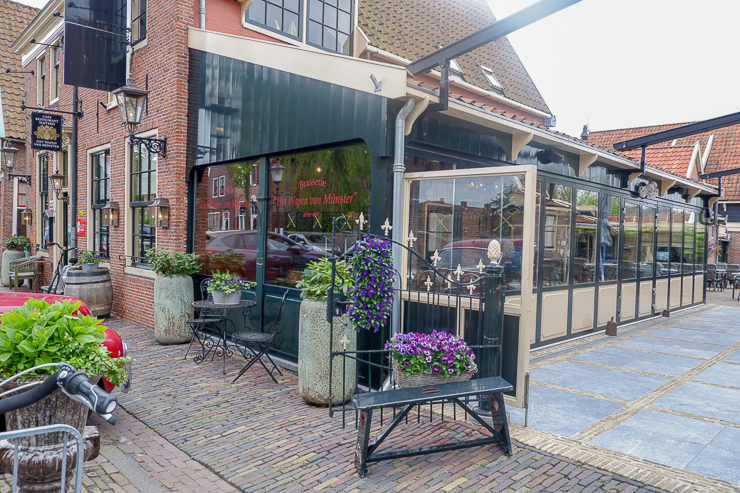


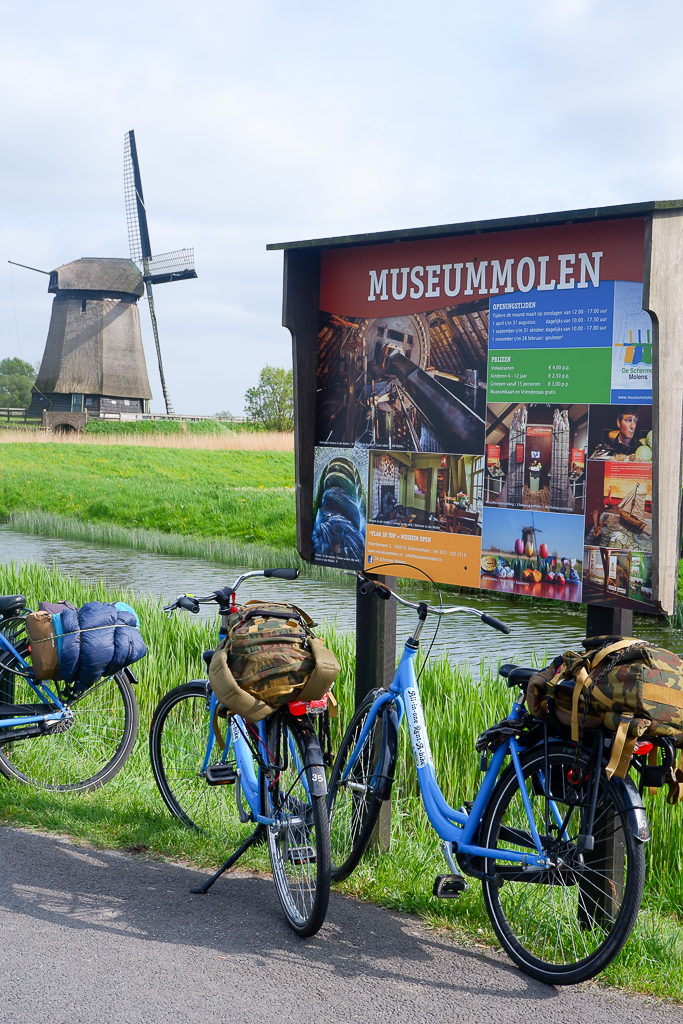







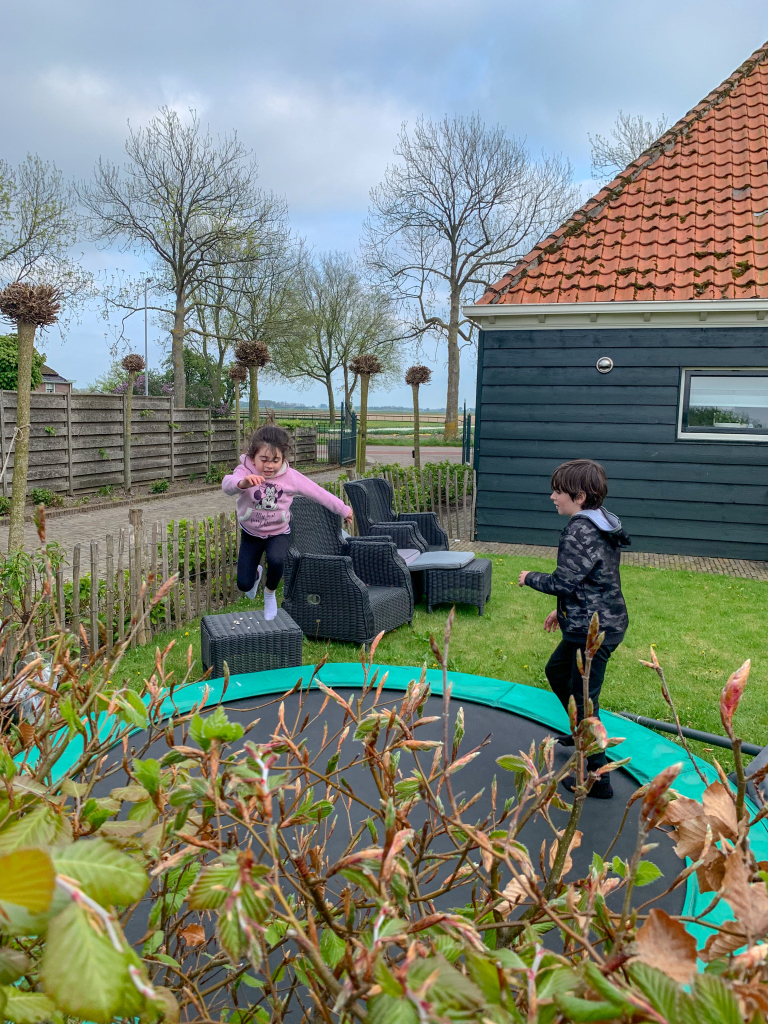




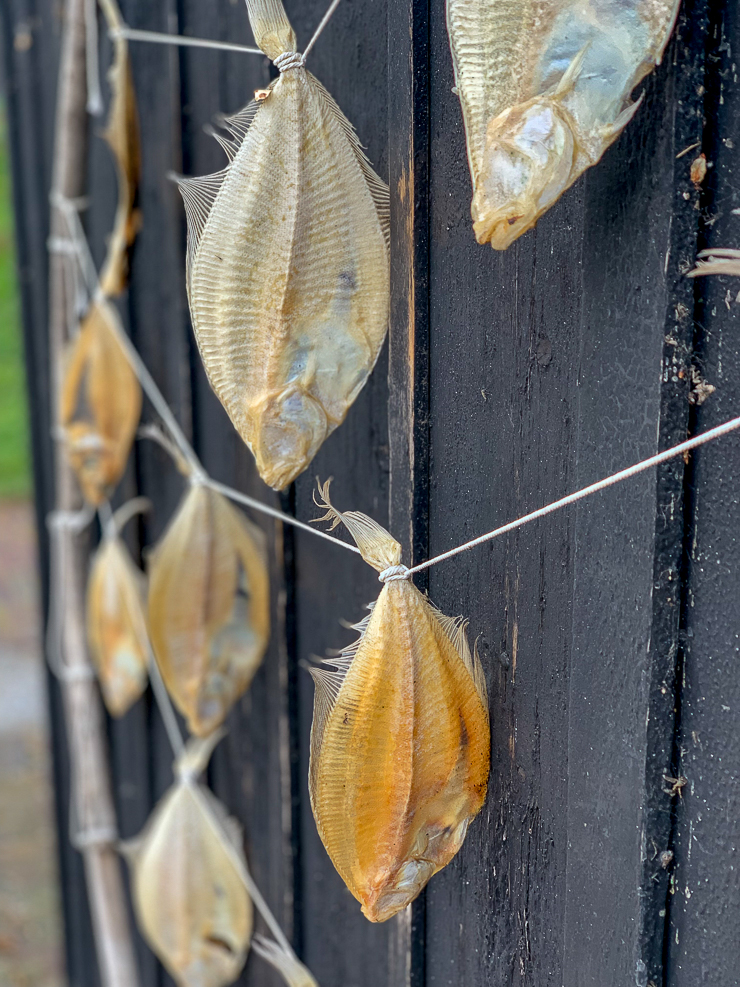
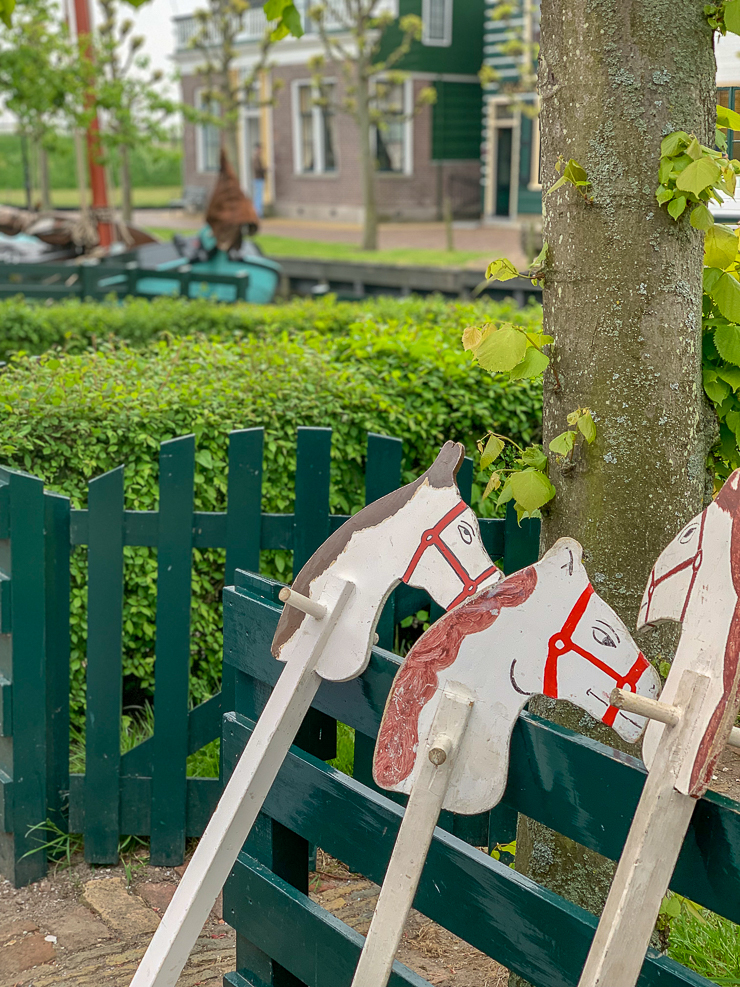

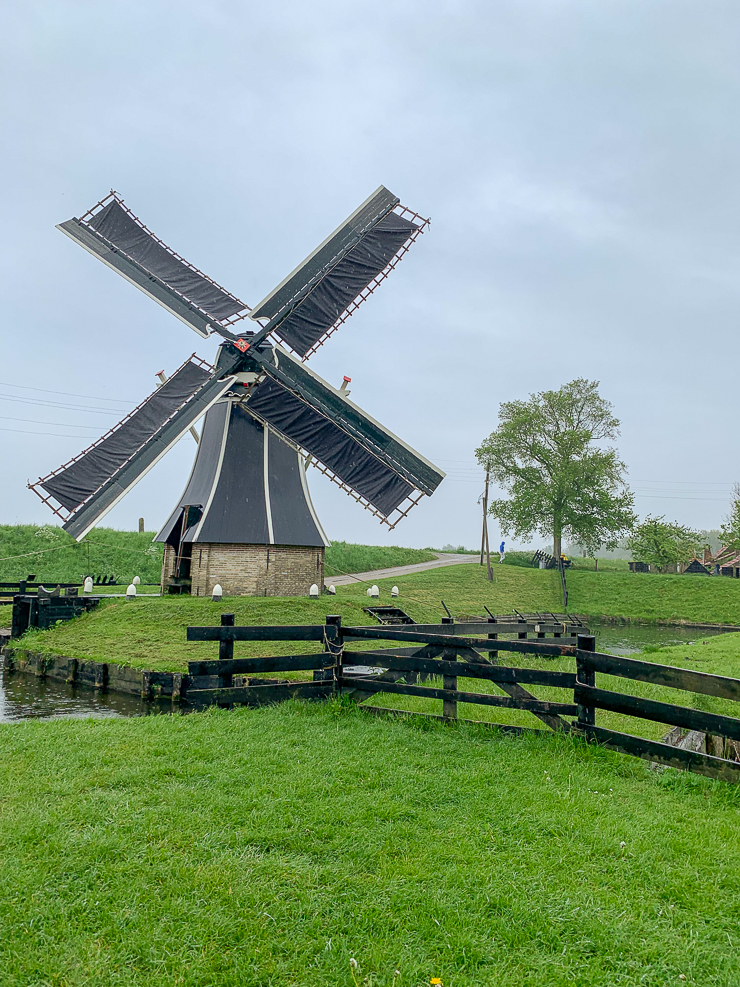

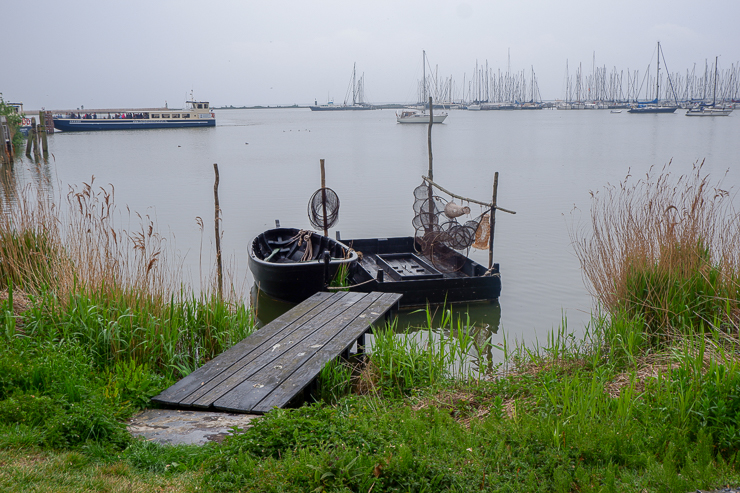








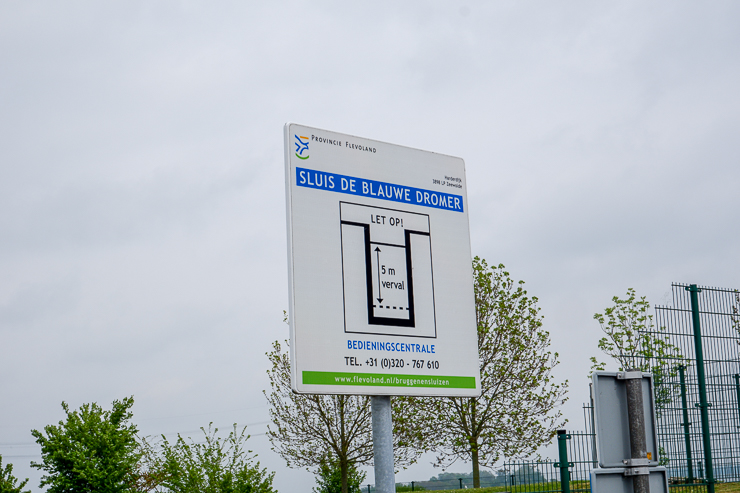

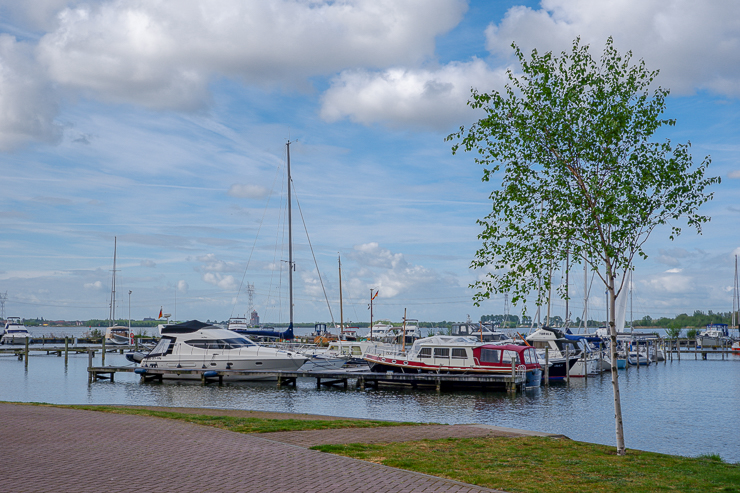

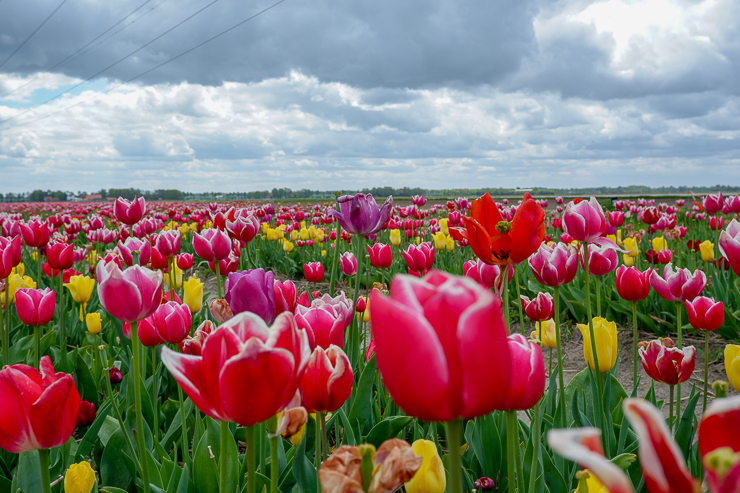


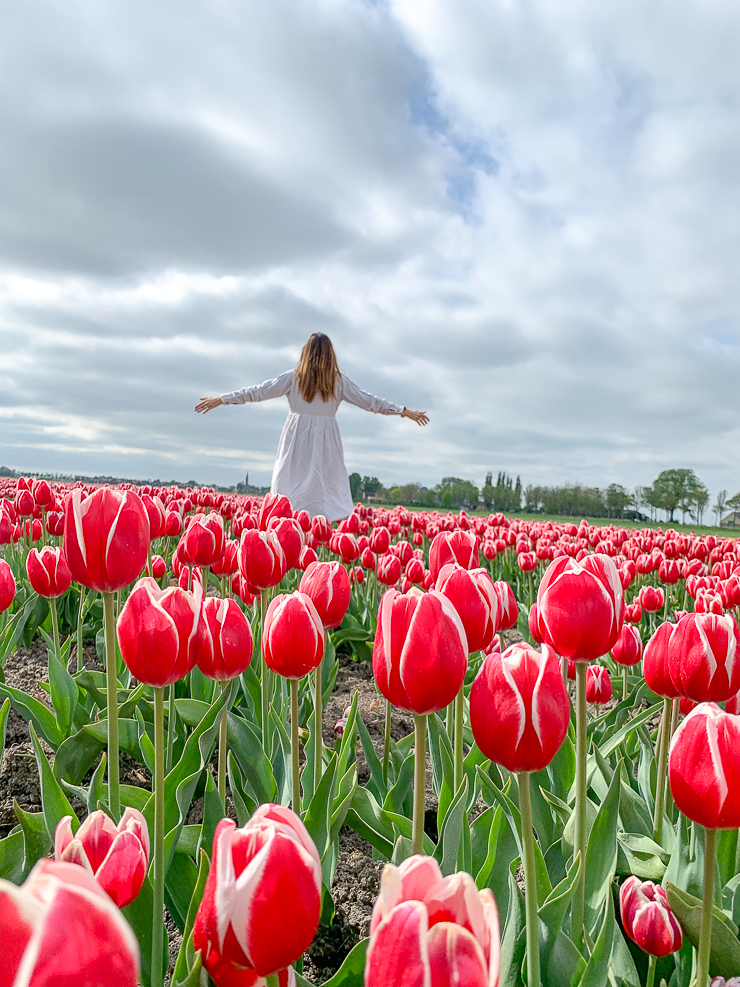










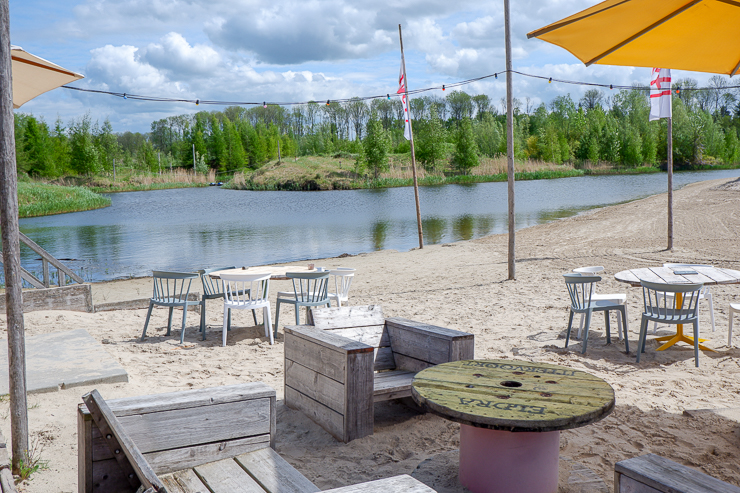




















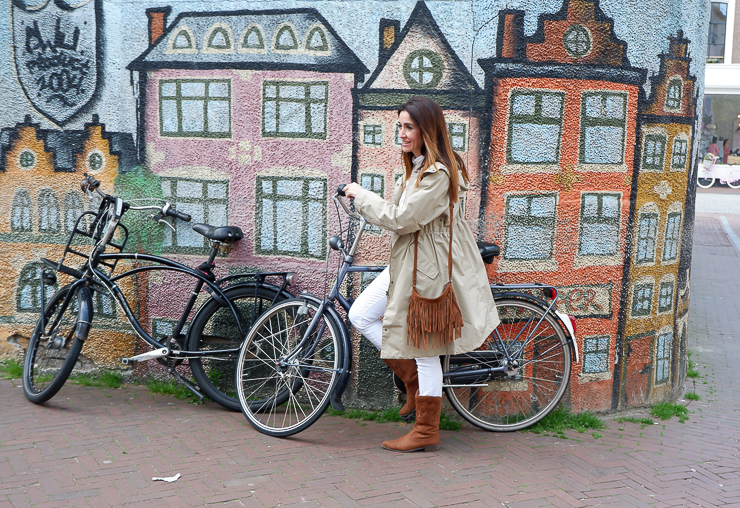



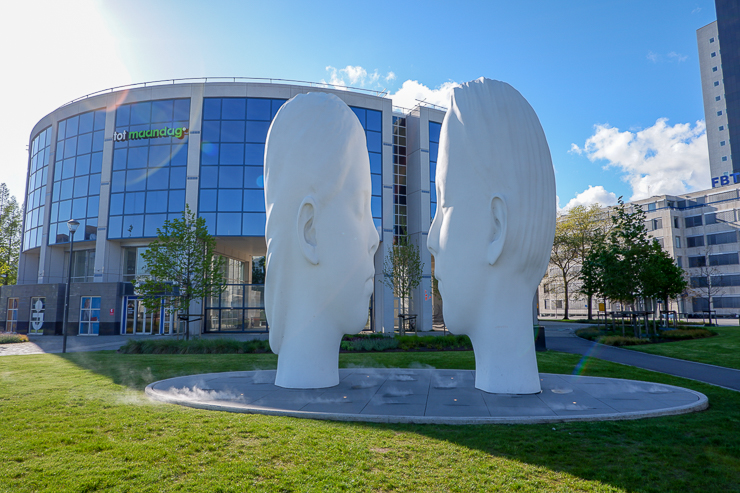





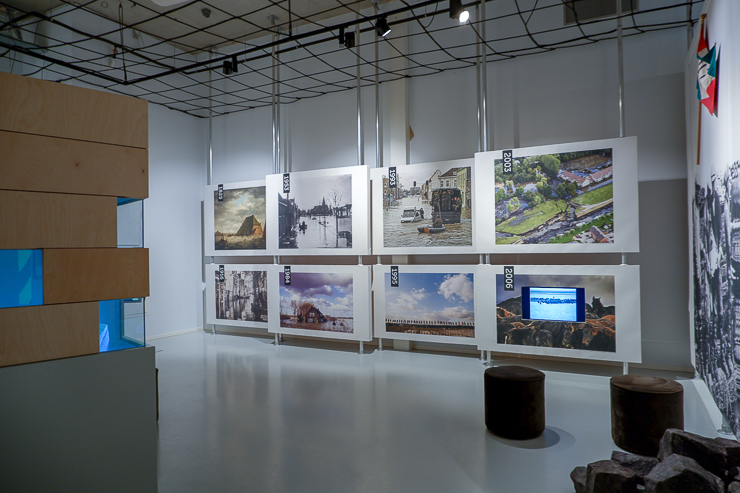





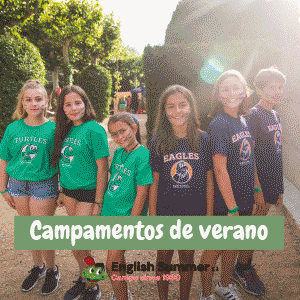
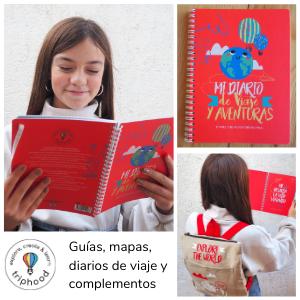

3 Comments
Es un viaje ideal. El año que viene me apunto.
Me encantó, en el 2020 planifico ir con unos amigos y ya voy leyendo todo material que encuentro, aún no he decidido la ruta, pero sin dudas lo que mencionas en tu artículo nos ayudará a decider. Gracias por compratir tus experiencias. Las fotos de los tulipanes …. me dejaron impresionado
Gracias a ti por tus palabras Ryne, ojalá puedas hacerlo y ya nos contarás. Un abrazo